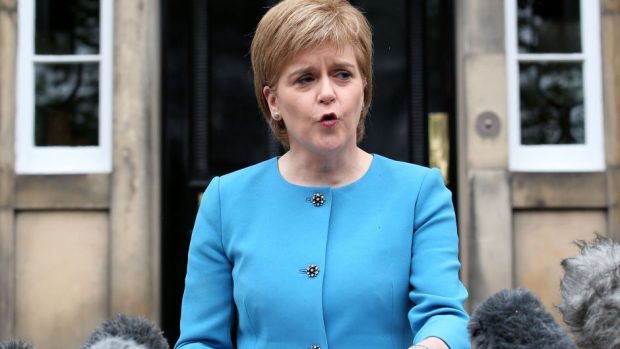One of Scotland’s top legal minds has poured cold water on Nicola Sturgeon’s apparent suggestion Holyrood might veto Brexit.
James Chalmers, regius professor of law at Glasgow University, said there has “never has been a power of veto” for the Scottish Parliament in relation to the EU referendum.
The first minister suggested yesterday that the Scottish Parliament could be able to quash the result of the poll, in which a majority of Britons voted to Leave the EU.
But Professor Chalmers said the issue of Holyrood consent was only one of “good governance” – and that Westminster could override the Edinburgh chamber if necessary.
The majority of Scots voted Remain in last weeks’ EU referendum, but England and Wales voted to Leave.
Ms Sturgeon has already said her government is considering all options to keep Scotland in the EU.
Prof Chalmers told the Press and Journal: “Ever since the creation of the Scottish Parliament, it has been accepted that Westminster should not legislate on devolved issues without getting Holyrood’s consent.
“In evidence to the House of Lords, Sir David Edward argued that the principle of seeking consent would apply to legislation implementing Brexit.
“But this is not, and never has been, a power of veto. It is only a matter of good governance.
“If Holyrood refuses to give consent, Westminster can proceed without it.
“And proceeding without consent creates a political problem, but not a legal one.”
Speaking yesterday, SNP leader Ms Sturgeon said that “of course” she would ask MSPs to refuse to give their “legislative consent”.
But Prof Chalmers view casts doubt on the first minister’s argument.
Ms Sturgeon said: “The issue you are talking about is would there have to be a legislative consent motion or motions for the legislation that extricates the UK from the European Union?
“Looking at it from a logical perspective, I find it hard to believe that there wouldn’t be that requirement – I suspect that the UK government will take a very different view on that and we’ll have to see where that discussion ends up.
The first minister is undertaking discussions with other EU leaders to explore options for Scotland to avoid breaking with Brussels.
Ms Sturgeon has already suggested a second referendum on independence could be called in a bid to keep Scotland in the EU.
